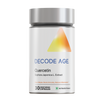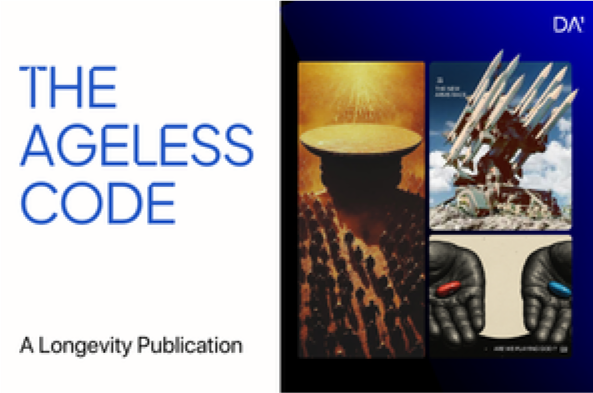The marvels of space travel come with their challenges, especially concerning the human body's ability to adapt to the unique conditions of space. Recent research has shed light on how space travel significantly affects astronauts' bone health, leading to accelerated ageing of their bones.
While significant technological and engineering progress has been made in space travel, we're learning that venturing through the astral plane takes quite a toll on the human body. The onslaught of radiation and the lack of gravity has been shown to affect an astronaut's health and ageing.
An international team of researchers now shows that space travel makes the bones of astronauts age faster. Specifically, microgravity-which causes weightlessness-induces irreversible damage to bone strength, density, and microarchitecture. While bone partially recovers after spaceflight, astronauts can come back with what seems like a decade of earth-bound age-related bone loss in just a matter of months. The study shows that differences in an astronaut's bone response to microgravity and recovery after return to Earth are primarily explained by mission duration.
"This may not sound like much, but it corresponds to age-related bone loss of at least a decade," explains study author Dr. Anna-Maria Liphardt. "For those affected, this means they will have to expect a much earlier onset of osteoporosis and susceptibility for fractures."
This research resulted from an international collaboration between The University of Calgary, NASA Lyndon B. Johnson Space Center, German Centre for Immune Therapy, Friedrich-Alexander-Universität Erlangen-Nürnberg, and Universitätsklinikum Erlangen.
Space Affects Skeletal Strength
The human body is an incredible machine that adapts to the environment in which it exists. However, when that environment changes drastically, such as in the case of long-term space flight, the body can experience significant negative effects. One area of concern for astronauts is the health of their bones. Research has shown that the damaging effects of spaceflight on bone can be severe, leading to a decrease in bone density, strength, and overall microarchitecture.
To fully understand the risks to astronauts' long-term skeletal health, it is important to determine the extent to which bone can recover after prolonged spaceflight. According to Dr Lauren Liphardt, a member of the research team studying the impact of spaceflight on bones, "If human beings are in space for three years at a time, we need to keep an eye on the health risks involved as well. This already applies today for missions where astronauts are subject to zero-gravity conditions for usually no longer than six months."
The research team examined the bone strength, density, and microarchitecture of seventeen astronauts, with an average age of 47, both before and after spaceflight. The results showed a significant decrease in bone strength, mineral density, and volume in the tibia (or shinbone) after only 12 months of recovery. What's more, the longer the mission, the greater the effect on bone recovery, with astronauts on longer missions remaining at an increased risk for incomplete recovery of bone density.
A key finding of the study was the link between bone cell turnover and healing in astronauts. Those who did not fully recover bone density had higher levels of biomarkers related to bone turnover compared to those whose bones did recover. This indicates that maintaining a high level of bone cell turnover, which is often achieved through regular physical activity, is crucial for bone recovery in space.
Anti-Ageing Measures In Space
The implications of these findings are concerning, especially as missions to space continue to expand in duration. Dr. Liphardt states, "Unless countermeasures improve, incomplete bone structure and strength recovery may worsen as missions get longer." The challenge for scientists and engineers is to develop new methods of exercise and equipment that can maintain bone health in the zero-gravity conditions of space.
Currently, NASA utilizes bisphosphonates as a preventative measure against bone loss in astronauts. However, there is still much to be learned about their effectiveness in microgravity. As the study suggests, further research is needed to optimize countermeasures for mitigating bone loss on long-duration flights.
One recommendation put forth by the research team is the combination of medical therapy and physical exercise. By simultaneously addressing both the medical and physical aspects of bone health, astronauts may have a better chance of maintaining healthy bones during their missions. Additionally, identifying individuals with elevated biomarkers of bone turnover can help target preventative measures towards those at the greatest risk of irreversible bone loss.
The journey to fully understanding the effects of space on the human body is ongoing. As we continue to venture further into the unknown, research and discovery will play a crucial role in ensuring the health and safety of those who boldly go where few have gone before.
How NMN Supports Bone Health
Exploring the Impact of Nicotinamide Mononucleotide on Bone Tissue Health in Humans
When it comes to maintaining healthy bones, most of us think of factors such as diet, exercise, and calcium intake. However, recent studies have shown that there may be another key player in bone health - nicotinamide mononucleotide (NMN).
Previous research has shown that the immediate precursor to NAD+, NMN, restores bone tissue health in rodents like mice and rats. Specifically, research has shown that NMN can play a critical role in supporting the health of bone stem cells in older humans.
A recent study published in The Journal of Bone and Mineral Research suggests that NMN is necessary for bone stem cells to mature into bone-producing cells called osteoblasts.
The study, conducted by Liu and colleagues from Tianjin Medical University, showed that enhancing NMN synthesis can boost bone stem cell maturation and produce more osteoblasts, promoting bone formation. On the other hand, blocking NMN synthesis can impair bone fracture repair in mice by inhibiting the development of bone stem cells into bone-producing cells.
These findings are significant as they suggest that NMN may have therapeutic potential in bone regeneration, particularly in older individuals. This is supported by another study published in Cell Reports, which found that NMN rejuvenates the regulation of gene activity in bone marrow stem cells from older patients.
So, how exactly does NMN support bone health? NMN is a natural compound that plays a crucial role in the production of NAD+, a coenzyme involved in numerous cellular processes, including DNA repair, energy metabolism, and ageing. As we age, our bodies produce less NAD+, which leads to a decline in various cellular functions, including bone tissue health. Therefore, by supplementing with NMN, we can directly boost NAD+ levels and support the overall health of our bones.
These studies have particularly intriguing implications for astronauts who may experience bone loss during long-term spaceflight. The microgravity environment in space can affect bone formation and stem cell function, leading to decreased bone mass and an increased risk of fractures. With the potential of NMN to enhance bone stem cell maturation and promote bone formation, it is worth exploring its therapeutic potential in bone regeneration for astronauts.
Conclusion
In conclusion, NMN has shown promising results in supporting bone tissue health in rodents and humans. With further research and studies, we may soon see NMN become a valuable tool in promoting bone health and regeneration. So, if you're looking to maintain or support your bone health, don't forget to consider the potential benefits of NMN. The findings from this study are pivotal in understanding the risks associated with long-duration space travel. They not only highlight the immediate concerns for astronaut health but also pave the way for developing better strategies and treatments to protect astronauts' skeletal health. As space exploration continues to advance, addressing these health challenges will be crucial for the success and safety of future missions.
FAQ:
1) How does space travel affect the human body?
Space travel or microgravity conditions put less load on the bones of the body, making your musculoskeletal structure weak. These conditions also tend to impact gastrointestinal, and cardiovascular health.
2) Does space travel slow ageing?
There’s a phenomenon called gravitation time dilation- that means time moves slower as gravity increases. We all measure our experience in space-time differently. That's because space-time isn't flat - it's curved, and it can be warped by matter and energy. So depending on our position and speed, time can appear to move faster or slower to us relative to others in a different part of space-time. And for astronauts on the International Space Station, that means they get to age just a tiny bit slower than people on Earth.
3) Do bones age faster in space?
Bones are strengthened by use. In space, under microgravity, there is less load on the bones leading to deterioration in the bone tissue density, strength, and microarchitecture
4) Does NMN supplementation mean life on Mars is possible?
While NMN supplementation has proven effective against bone loss due to space travel and microgravity conditions. This shows hope for the future, where civilizations can be set up on the moon.


















Leave a comment
All comments are moderated before being published.
This site is protected by hCaptcha and the hCaptcha Privacy Policy and Terms of Service apply.